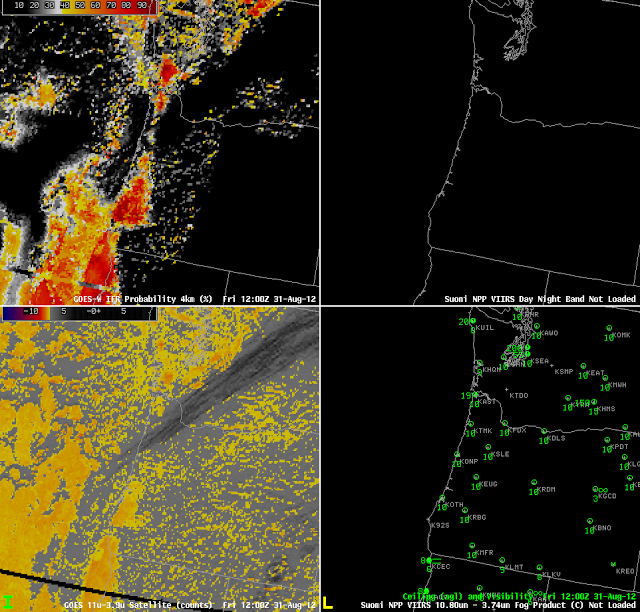The presence of the Day/Night band on the VIIRS instrument on the Suomi/NPP satellite offers a unique method of validating the presence of fog or stratus at night. During times near full moon (such as the Blue Moon on 31 August), the Day/Night band can detect low clouds using light reflected from the moon. The GOES-R IFR probabilities show fog and low/stratus over southwestern Oregon; a larger region of fog/low stratus stretched from just north of Crescent City, CA (where IFR conditions are reported) southward down the coast. Note also a small patch over southwestern Washington and coastal northwest Washington (where IFR conditions are reported. Cirrus clouds that prevent the detection of fog/low stratus from satellite are present stretching northeastward from the ocean off the central Oregon coast into central Washington. There is a small signal in the GOES-R IFR Probability field underneath this upper cloud feature.
AT 1200 UTC, some benefits of the GOES-R IFR probability field are apparent. The noisy signal over central and eastern Oregon is reduced, and a signal is present also underneath the thin cirrus streak that persists over extreme northwest Oregon.


